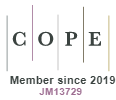Energy Optimisation in Office Buildings Through Daylighting Design for Climatic Conditions of Central India
DOI:
https://doi.org/10.15415/cs.2016.32002Keywords:
Daylight, Office Buildings, Energy Optimisation, Daylighting DesignAbstract
This paper is based on the premise that energy optimisation is possible in office buildings through design of daylighting. The motivation for the study was born of the fact that in India, among all building typologies, commercial buildings consume the maximum energy. This energy consumption is mainly for cooling of the building and lighting the interior spaces. Cooling and lighting up spaces generates heat in and around the building, which again increases the cooling load. Out of the total electrical energy required in the building, around 20-40% is used for lighting purposes. Despite availability of daylight during the working hours, artificial lighting is used in offices that have huge internal spaces with large spans. This paper aims at understanding the factors related to daylight penetration into office building in different situations and developing guidelines for achieving maximum daylight penetration in large spaces.
Downloads
References
[2] CBRI (1968) Solar Data Book, Roorkee: Central Building Research Institute
[3] DELTA PYRAMAX ENGINEERING LTD. (n.d.) Suncatcher. Available from: http://www.sunpipe.com.hk/Sunpipe.files/SunCatcher.htm. [Accessed: 19 March 2016]
[4] ECO3. (2011) Energy Conservation Building Code Tip Sheet: Building Envelope, Version 3.0. Available from: http://eco3.org/wp-content/plugins/downloads-manager/upload/Envelope%20Tip%20Sheet%20(V-3.0%20March%20. [Accessed: 10 December 2015]
[5] EDWARDS, L. and TORCELLINI, P. (2002) A Literature Review of the Effects of Natural Light on Building Occupants. Colorado: National Renewable Energy Laboratory (NREL).Available from: www.nrel.gov. [Accessed: 21 February 2016]
[6] FRANTA, G., ANSTEAD, K. (1994) Daylighting Offers Great Opportunities. Window & Door Specifier-Design Lab. Spring. p. 40-43.
[7] HEERWAGEN, J.H. (2000) Green Buildings, Organizational Success, and Occupant Productivity. Building Research and Information. 28(5). p. 353-367.
[8] HESCHONG, L.(2007) Lecture on daylight at the second VELUX Daylight Symposium in Bilbao. Available from:www.da.velux.com. [Accessed: 25 March 2016]
[9] INDIAN BUILDING ENERGY CODE COMMUNITY. Available from: https://ibecc.in. [Accessed: 23 March 2016]
[10] KRISHAN, A. (2001) Climate Responsive Architecture: A design Handbook for Energyefficient Buildings. New Delhi: Tata McGraw Hill.
[11] MADHYA PRADESH PASCHIM KSHETRA VIDYUT VITARAN COMPANY LTD. Available from: www.mpwz.co.in. [Accessed: 23 March 2016]
[12] MCNEIL, A. and LEE E.S. (2013) Annual daylighting performance of a passive optical light shelf in sidelit perimeter zones of commercial buildings., 2013.Lawrence Berkeley Research National Laboratory. Available from: http://eetd.lbl.gov/sites/all/files/passive_optical_light_shelf.pdf. [Accessed: 04 January 2016]
[13] SUN, L. et al (2015) Dynamic Performance of the Shading-type Building-Integrated Photovoltaic Claddings. Procedia Engineering. 121. p. 930-937. Available from: https://www.researchgate.net/publication/283944290_Dynamic... [Accessed: 22 January 2016]
[14] VELUX EDITORIAL.(2007) Framing Daylight. Daylight & Architecture. Autumn (6). p. 3 … Available from: http://da.velux.com/ar-LB/Documents/PDFs/DA07_Complete.pdf. [Accessed:29 April 2016]
[15] VELUX MEDIA CENTRE. (2007) press.velux.com, Press Release: Daylight must be givenhigher priority. Available from: press.velux.com/daylight-must-be-given-higher-priority.[Accessed on: 22 January 2016]
Downloads
Published
Issue
Section
License
Articles in the Journal of Creative Space (Creat. Sp.) by Chitkara University Publications are Open Access articles that are published with licensed under a Creative Commons Attribution- CC-BY 4.0 International License. Based on a work at https://cs.chitkara.edu.in. This license permits one to use, remix, tweak and reproduction in any medium, even commercially provided one give credit for the original creation.
View Legal Code of the above-mentioned license, https://creativecommons.org/licenses/by/4.0/legalcode
View Licence Deed here https://creativecommons.org/licenses/by/4.0/
 |
Journal of Creative Space by Chitkara University Publications is licensed under a Creative Commons Attribution 4.0 International License. Based on a work at https://cs.chitkara.edu.in/ |







